If your spring Turkey hunt has you yawning, I’ve got a challenge that just might wake you up. Take your gobbler hunt to the next level with an air gun. If you have the stalking skills, hunting turkey with an air rifle will give you something to brag about.
There are going to be two tests of skill. The first, of course, will be your ability to get close to the birds. Your calling skills will help. Turkey talk is an art form, and one that can bring a fat tom almost close enough to touch. But there’s still something to be said for moving stealthily and anticipating the movements of the birds.
For those that want extra insurance, I’d suggest keeping a close eye on the wind. If you want even more of an edge, set out some decoys.
As with any hunting or shooting sport, I advise everyone to be cautious. Making yourself look and sound like a turkey poses some obvious risks. Do not hide directly behind a turkey decoy.
Seeing the birds, though, is just the first part. How do you get it on the table?
Umarex Gauntlet Air Rifle for Turkey Hunting
.jpg) Nothing beats a reliable pre-charged pneumatic for hunting. My choice is the Umarex Gauntlet. I’d go for a .22 or, even better, a .25—both of which pack ample punch. When zeroed at 40 yards, you have more than enough range to ensure proper shot placement on a turkey.
Nothing beats a reliable pre-charged pneumatic for hunting. My choice is the Umarex Gauntlet. I’d go for a .22 or, even better, a .25—both of which pack ample punch. When zeroed at 40 yards, you have more than enough range to ensure proper shot placement on a turkey.
Use a good scope. A 3-9x40 is ample for a 40 yard shot, but the more magnification, the better. The kill zone on a turkey is tiny. As they walk, they tend to keep their heads level and somewhat still as their bodies move, so that’s a plus. Otherwise, you will have to sever the spine or penetrate a dense batch of feathers over the heart.
The real appeal of the Gauntlet is the rapid fire potential of this bolt action. If the first shot misses, you may get a second or third. As the Gauntlet runs from a precharged tank, those shots are easy to fire. I’ve hunted with the Gauntlet and find I can even run the bolt from the shoulder, without breaking from the scope. Since there is almost no noise or recoil, I rarely lose sight of the target after I fire.
Turkey Hunting with Walther Parrus Pellet Rifle
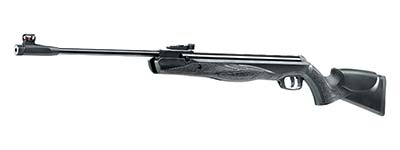 The downside to any PCP is that they do have to be charged. The .25 Gauntlet will fire 20 or more shots before you have to top off the tank. You might have to leave the woods to find air (or carry a spare tank and swap them out).
The downside to any PCP is that they do have to be charged. The .25 Gauntlet will fire 20 or more shots before you have to top off the tank. You might have to leave the woods to find air (or carry a spare tank and swap them out).
Or you can simply crack open your Parrus and slide in a new pellet. The Walther Parrus in .22 is a beast. This is a hefty gun. That weight is a downer for long walks in the woods, but it makes for a very steady platform for knocking down turkeys.
The break-barrel Parrus in .22 can easily break a turkey neck, though—again—shot placement is everything. With 23 foot-pounds at the muzzle, this is a hunting gun.
The Parrus, though, is meant for the woods. The synthetic stock is ideal in wet conditions, and Walther’s smooth German engineering makes repeat accuracy easy. While I’d still recommend a scope, the Parrus has fiber optic sights that making getting a bead on a beard even faster.
RWS Model 34 Turkey Hunting Airgun
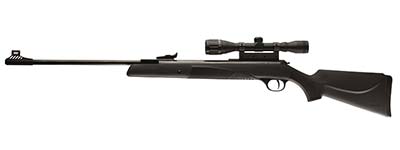 If you’re more of a traditionalist, the RWS 34 might appeal to you. The wooden stock of the 34 feels instantly familiar to those of us who grew up before the age of plastics. Both the Gauntlet and the Parrus have a tactile component of their innovation, but the RWS 34 feels like a classic centerfire.
If you’re more of a traditionalist, the RWS 34 might appeal to you. The wooden stock of the 34 feels instantly familiar to those of us who grew up before the age of plastics. Both the Gauntlet and the Parrus have a tactile component of their innovation, but the RWS 34 feels like a classic centerfire.
Don’t discount its abilities, though. Yes, the 34 is an heirloom quality gun that—if properly cared for—will outlive you, but it is also a workhorse. There’s no need to baby it.
The 34 pushes a .22 pellet at 800 fps, which offers one-shot kill potential at reasonable ranges.
No matter which gun you choose, understand that this is a worthy challenge. There’s a reason why some amateurs blast away at birds with hypercharged 12 gauge shotguns.
Here’s my final tip. Heavy pellets hit harder than their faster-moving lightweight counterparts. This is some serious science, way above my pay grade, but I think I understand the concept. A heavy .177 pellet may leave the barrel at a more lethargic pace, but its momentum allows it to handle air resistance (on the way to the target) and hit harder. Those numbers, if we could easily calculate them, would fit into the “terminal ballistics” category.
To make it simple, I use this rule. If I’m hunting with an air rifle, I want the heaviest pellet I can find that my rifle shoots accurately. And I sight in using exactly the same pellet weight and shape that I’m going to hunt with.
With the right pellets and the right gun, the success of the hunt truly rests on you.


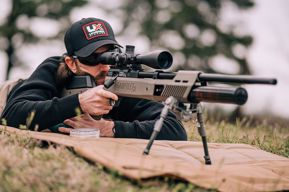
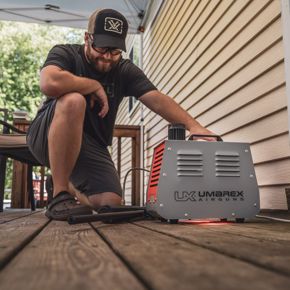
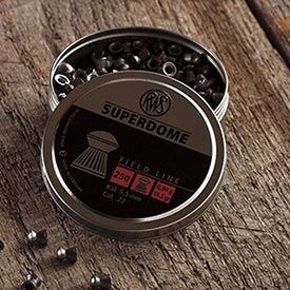
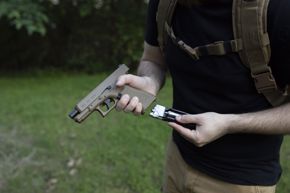

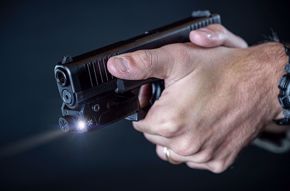

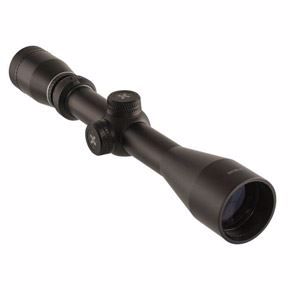
Bob Ackerson